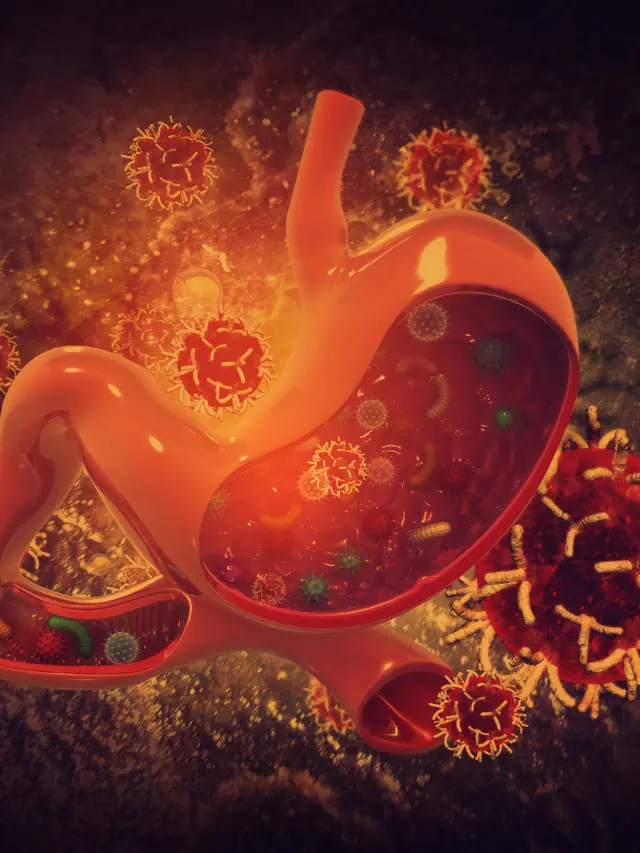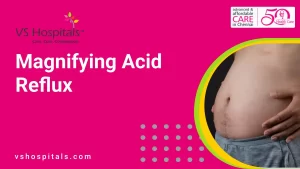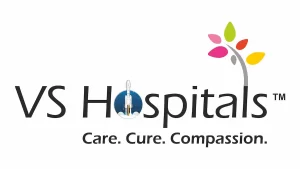The medical term for “Acid Reflux” is Gastroesophageal Reflux Disease (GERD). Magnifying acid reflux can be defined as when the product of abnormal reflux of gastric contents enters the oesophagus, it creates mucosal damage or chronic symptom.
Primarily, this disease strikes adults besides also affecting infants and children. Normally spurred by eating certain foods, taking a sleep after a heavy meal, and if not pregnancy. A large number of persons should undergo stomach cancer treatment if they suffer from heartburn or acid ingestion, the other names for acid reflux.
Symptoms of magnifying acid reflux
The major symptom of magnifying acid reflux in the oesophagus is heartburn which is caused by a burning sensation at the back of the sternum.
The other symptoms may include coughing, hoarseness, voice transformation, constant earache, or sinusitis. The complications in magnifying acid reflux may lead to esophageal ulcers or in the worst scenario it can lead to esophageal or stomach cancer.
However, constant heartburn sensations do not mean that a person has captured GERD already. The risk can occur in magnifying acid reflux when heartburn has happened more than once a week, which could possibly lead to developing GERD.
What are the causes of GERD?
The usual cause of GERD can be due to the increase in acidity or production of gastric acid in the body, pregnancy, obesity, or tight-fitting apparel, adding more complications to the problem. The yeast infections can also be one of the causes of GERD-like symptoms.
An added ironical cause of GERD is due to the insufficient production of stomach acid in the body. The valve which is the hollow organ with a flap ensures a one-way course of fluid through the organ, once emptied triggers the acidity in the intestines. If the valve fails to open, the contents in the stomach will be blended into the oesophagus, and then cause irritation requiring stomach cancer treatment.
There are several treatments for GERD today, but the foremost thing to consider is to have a balanced diet with healthy eating habits. If a proper diet fails to work, a patient can shift to stomach cancer treatment after the medication therapy or surgery as suggested by the doctors.
Check out A Little about Prostate Cancer
Below are several selections of stomach cancer treatments:
Proper Diet
The natural way to cure Acid Reflux is to adapt to healthy eating habits. People who are prone to GERD have found success in following this method. Avoid the food ingredients which can intensify your heartburn such as soft drinks, caffeine, and smoking. Avoid having dinner two hours before sleeping. Avoid lying in bed immediately after a meal. These have to be done regularly during stomach cancer treatments with a change in lifestyle.
Elevate the head of the bed
This is another easy way called pharmacologic therapy, which is nothing but the combination of prevention of intake of food two hours before sleeping beside the rise of the head of the bed. This has been a great chance for a patient to gain 95% relief. The suggested range for the rise of the head of the bed can only be about 6 to 8 inches or 20 cm. Using this stomach cancer treatment method, the backflow of gastric fluids will be hampered.
Drug Treatment
Drugs usually reduce the secretion of gastric acid, like famotidine and omeprazole to lessen the secretion of gastric acid and Antacids to counteract the acid.
Surgical treatment
The surgical treatment for Acid Reflux, covers only a short period of time. The major function of this is to support the sphincter, a spherical bond of muscles to open and close the passage of food or waste, as well as stop Acid Reflux, and of course, it helps to restore the hiatal hernia.
How is stomach cancer treated?
The fundamental therapies for stomach disease are:
1. Medical procedure for Stomach Cancer
2. Chemotherapy for Stomach Cancer
3. Designated Drug Therapy for Stomach Cancer
4. Immunotherapy for Stomach Cancer
5. Radiation Therapy for Stomach Cancer
Read also Foods for Cancer Patients.





